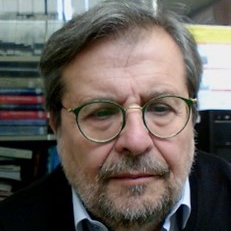Wave Phenomena in Ship and Marine Hydrodynamics
A special issue of Journal of Marine Science and Engineering (ISSN 2077-1312). This special issue belongs to the section "Ocean Engineering".
Deadline for manuscript submissions: closed (30 September 2020) | Viewed by 18317
Special Issue Editor
Interests: ship and marine hydrodynamics; wave-body–seabed interactions; wave–current interaction; propagation in inhomogeneous environment; wave climate and potential; marine renewable energy systems
Special Issues, Collections and Topics in MDPI journals
Special Issue Information
Dear Colleagues,
Wave phenomena in ship and marine hydrodynamics include flow interactions with marine vehicles, such as surface ships, submerged vehicles operating near the free-surface and offshore, and coastal structures—both fixed and floating ones. Some of the important topics are resistance and propulsion in waves, as well as controllability, wave loads, wave induced motions, energy performance, and marine renewable energy. A better understanding and application of the methods for the hydrodynamic analysis of ships and marine structures is of the utmost importance concerning their design and operation. This Special Issue aims to discuss the recent advances on wave hydrodynamics in ship and ocean engineering, and other related fields such as renewable marine energy. Specific topics include the following:
Linear and nonlinear waves and currents in offshore and nearshore environment
Computational wave hydrodynamics and numerical wave tank
Wave–structure interactions and hydro-elasticity effects
Environmental loads and underwater noise
Resistance, propulsion, seakeeping, and maneuverability of ships in waves
Hydrodynamics of renewable marine energy systems and ocean resources
Experimental techniques for towing tank, wave flume and water basin
Other aspects of wave hydrodynamics in ship and ocean engineering.
Prof. Kostas A. Belibassakis
Guest Editor
Manuscript Submission Information
Manuscripts should be submitted online at www.mdpi.com by registering and logging in to this website. Once you are registered, click here to go to the submission form. Manuscripts can be submitted until the deadline. All submissions that pass pre-check are peer-reviewed. Accepted papers will be published continuously in the journal (as soon as accepted) and will be listed together on the special issue website. Research articles, review articles as well as short communications are invited. For planned papers, a title and short abstract (about 100 words) can be sent to the Editorial Office for announcement on this website.
Submitted manuscripts should not have been published previously, nor be under consideration for publication elsewhere (except conference proceedings papers). All manuscripts are thoroughly refereed through a single-blind peer-review process. A guide for authors and other relevant information for submission of manuscripts is available on the Instructions for Authors page. Journal of Marine Science and Engineering is an international peer-reviewed open access monthly journal published by MDPI.
Please visit the Instructions for Authors page before submitting a manuscript. The Article Processing Charge (APC) for publication in this open access journal is 2600 CHF (Swiss Francs). Submitted papers should be well formatted and use good English. Authors may use MDPI's English editing service prior to publication or during author revisions.
Keywords
- ship and marine hydrodynamics
- free surface hydrodynamics
- wave-body–seabed interactions
- wave–current interactions
- marine propulsors and biomimetic thrusters
- propagation in inhomogeneous environment
- wave energy potential and energy systems





